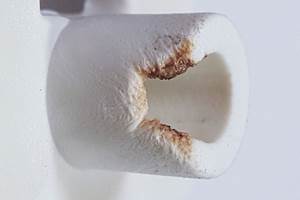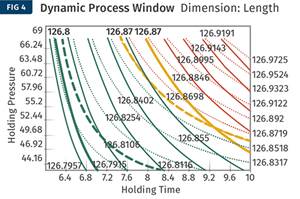First Plastics Molders Sign Up For Ford's 'Supplier Park'
A 155-acre lot in the Chicago area, vacant for 40 years, will be converted into the site of the first automotive "supplier park" in the U.S.
A 155-acre lot in the Chicago area, vacant for 40 years, will be converted into the site of the first automotive "supplier park" in the U.S. This concept, which has been applied by Ford and General Motors in Europe and South America, will see its domestic debut next year under the auspices of Ford Motor Co., Dearborn, Mich. Suppliers to Ford are being invited to establish new manufacturing facilities at a single site one-half mile from Ford's Chicago assembly plant. Six buildings are planned for the site, occupying a total of 1.5 million sq ft. The "park" concept presumes that having numerous suppliers dedicate manufacturing capacity to a single customer at a site close to that customer would offer the ultimate in "just-in-time" manufacturing efficiency. The result should be lower shipping and inventory costs as well as greater flexibility to respond to changes in Ford's assembly schedule. The Chicago assembly plant itself is being upgraded with an electric monorail system and flexible tooling that allows for rapid changeovers—"even from a small car to an SUV," says Roman Krygier, Ford's group v.p. for manufacturing and quality.
To date, nine companies have signed up for space at Ford's Supplier Manufacturing Campus. Three plastics part makers are among them: Visteon Corp. of Dearborn will produce front-end integrated assemblies, dashboard/cockpit systems with climate control, and fuel storage systems. Plastech Engineered Products Inc., also of Dearborn, will injection and blow mold parts. (The company specializes in interior trim, cockpit modules, and wiring harnesses.) Summit Polymers Inc. of Kalamazoo, Mich., will injection mold consoles.
Suppliers at the park will be making parts and modules for two brand-new vehicles, the CrossTrainer, a sedan/SUV hybrid, and the Ford Five Hundred, a new sedan. More than half of the assembly plant's purchases will come from the supplier campus. "Establishing a plant in the park does not take any ´óĎó´«Ă˝ away from our other plants," says Greg Gardner, manager of corporate public affairs for Visteon.
Benefits of campus living
In addition to leasing the real estate from Ford, each supplier on campus is responsible for installing its equipment, staffing the plant, and day-to-day operations. Dedicating a whole new plant to one customer may seem an extreme step to a molder accustomed to scheduling jobs from various companies. However, the cost savings and manufacturing efficiencies are expected make the opportunity worthwhile. "It is a steady source of contracted work, so we can sequence our production in a way that matches up with Ford's plan of assembling the vehicle," says Visteon's Gardner. In addition, suppliers making subassemblies have an opportunity to integrate part production schedules with other companies on the campus.
JIT operations help suppliers like Visteon keep raw-material and finished-product inventories to a minimum and also to respond faster when Ford has a change in plans. Making a sudden shift in production is more difficult to accomplish in a typical custom molding shop, where multiple jobs from different customers compete for time on a machine.
Even in this electronic age, physical proximity is expected to be an advantage in alerting suppliers to any sudden and drastic change in production plans, such as happened in the current economic slowdown, when parts orders were cancelled and suppliers such as Visteon got stuck with excess materials on the shop floor.
Related Content
Using Data to Pinpoint Cosmetic Defect Causes in Injection Molded Parts
Taking a step back and identifying the root cause of a cosmetic flaw can help molders focus on what corrective actions need to be taken.
Read MoreBack to Basics on Mold Venting (Part 1)
Here’s what you need to know to improve the quality of your parts and to protect your molds.
Read MoreOptimizing Pack & Hold Times for Hot-Runner & Valve-Gated Molds
Using scientific procedures will help you put an end to all that time-consuming trial and error. Part 1 of 2.
Read MoreProcess Monitoring or Production Monitoring — Why Not Both?
Molders looking to both monitor an injection molding process effectively and manage production can definitely do both with tools available today, but the question is how best to tackle these twin challenges.
Read MoreRead Next
People 4.0 – How to Get Buy-In from Your Staff for Industry 4.0 Systems
Implementing a production monitoring system as the foundation of a ‘smart factory’ is about integrating people with new technology as much as it is about integrating machines and computers. Here are tips from a company that has gone through the process.
Read MoreMaking the Circular Economy a Reality
Driven by brand owner demands and new worldwide legislation, the entire supply chain is working toward the shift to circularity, with some evidence the circular economy has already begun.
Read More










